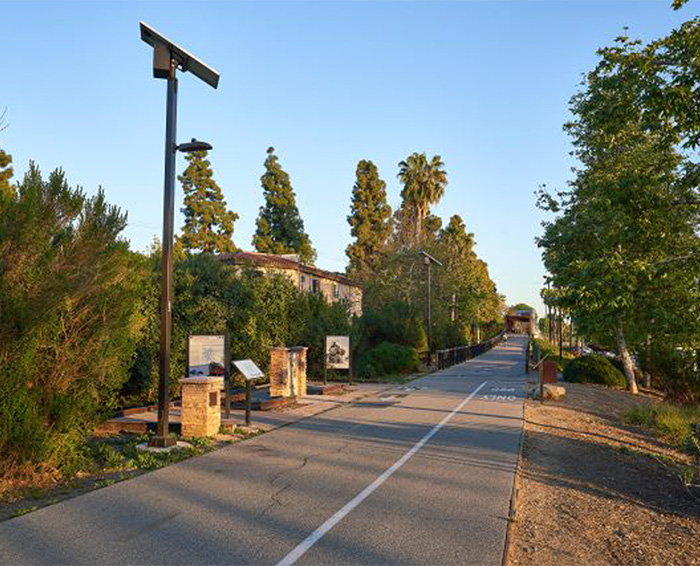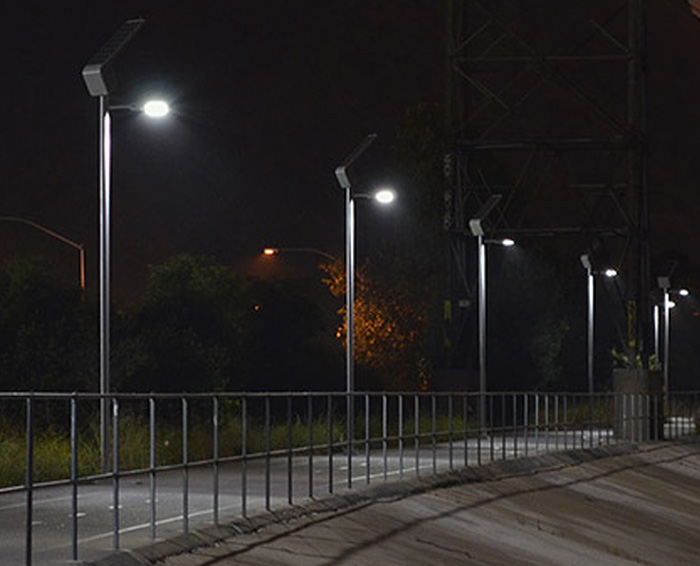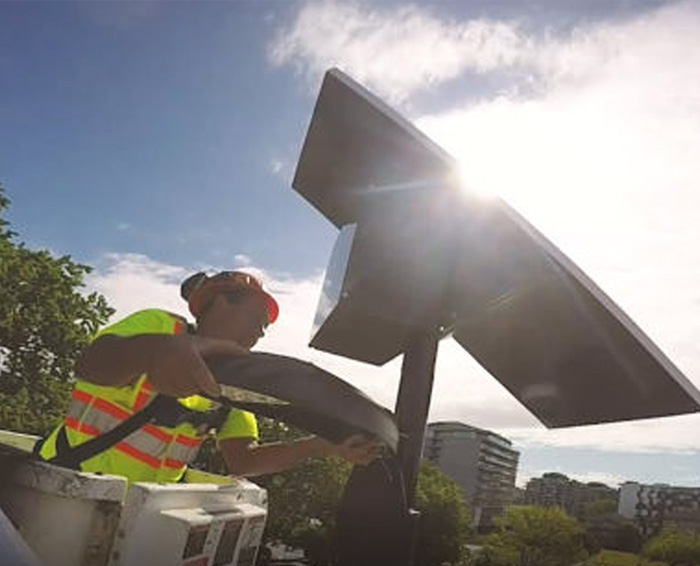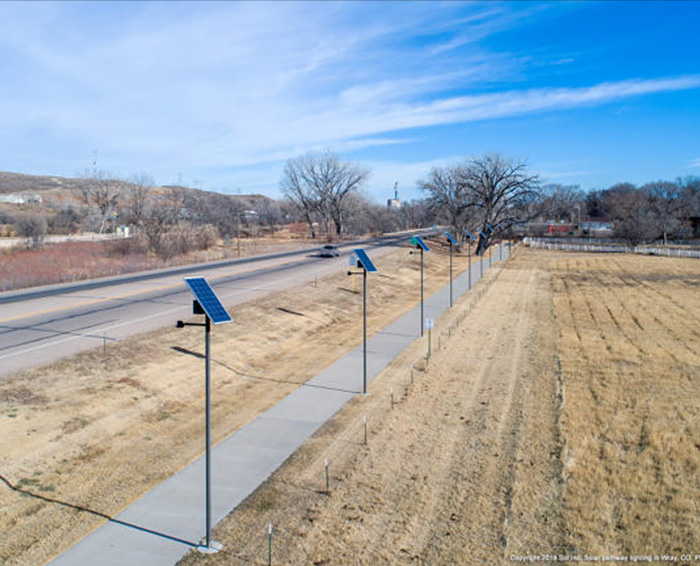In our rails-to-trails series, we first looked at the basics of urban renewal, how rails-to-trails projects fit in, and why municipalities, counties, and states would want to take part. Next, we will cover the considerations when lighting a trail to ensure trail safety.
Trails may be convenient during the day, but they often must close at sundown—which can limit their use, especially in winter months with shorter hours of daylight. Proper signage and after-dark policies may help, but installing effective lighting is an even better way to increase the sense of safety for trail users. Here are five things to consider to effectively light your rail-trail project:

Properly assessed lighting considers who will use the trail and for what purpose. What types of trail users are there? Commuters traveling after dark, especially in winter, will likely need and want more lighting than weekend visitors, who may be more likely to stick to daylight hours for their activities.
Once you’ve determined that lighting is desired, consultation in the surrounding area is vital—both for illumination and noise or other concerns—because not everyone will be on board with this trail feature. It would be best to consider human neighbors who may not want extraneous lighting in their homes. Dark-sky initiatives may mean the community mandates against unnecessary nighttime lighting. (Learn more in #3 below about effective lighting design to minimize excessive light.)
In addition, there must be a proper environmental assessment to ensure the local ecology won’t be negatively affected by the lighting. For example, the Greenway Trail in Whittier, California, is a 4.5-mile commuter and recreational pathway surrounding residential and commercial communities that were not disturbed by trenching for wiring infrastructure. They chose solar lighting, which doesn’t require trenching to install, protecting the delicate wetland while still giving the community a safer alternative to walking along the nearby traffic hubs.

There are several considerations for lighting on a trail. Wired lighting may require little maintenance over time, but it is expensive to install and may not be feasible in riparian corridors or anywhere where environmental disruption is not permitted. Battery-powered lighting may be cheap and easy to repair, but it is unreliable and requires frequent maintenance for battery changes.
A solar-powered light combines the reliability of a wired light with the simplicity of installation of a battery-powered light. With no trenching required for cables, it is environmentally friendly and simple to maintain. Solar-powered trail lights are reliable as long as they are sized correctly for the location and are not heavily shaded by trees or structures, which can make solar less viable in certain areas.

Once you’ve selected the type of lights that will work for the location, consider the design of the lights and how they will be placed for maximum effectiveness. Licensed lighting professionals can help with this.
Adequate trail lighting will:

It is one thing to choose lights for the end users, but it’s another to choose lights that will be cost-effective to install and maintain. Installation varies by location and type of light, so running a cost comparison can be an excellent place to start.
Meanwhile, maintenance can be challenging for cities with already stretched thin budgets. For wired lights, a problem with one can cause a whole string to go out. Battery-powered lights avoid this problem, but if the lights are not configured properly, the maintenance team may be out changing batteries more frequently than they would like. Solar lighting can also have this problem if the solar panel and batteries are not sized properly for the location and light output requirements.

Who is paying for the lights and how? We’ll explore funding in the next article in this series: read about federal and state funding options here.
Solar lighting can be a good fit if you are lighting a rail trail, commuter path, or another urban pathway. To find out the viability of blazing your rail trail with solar lighting, try our Build & Price tool. It can determine the estimated cost of solar trail lights and the configurations required to keep them working for the long term.
